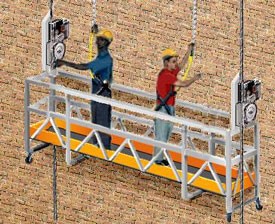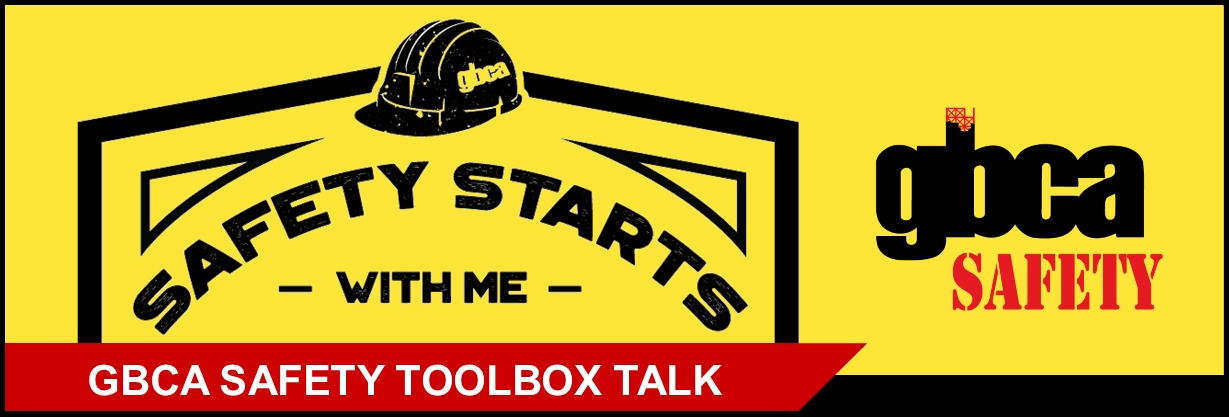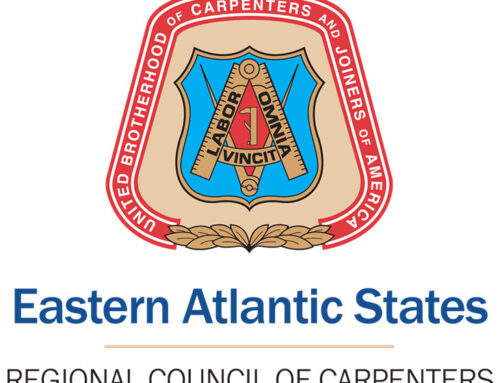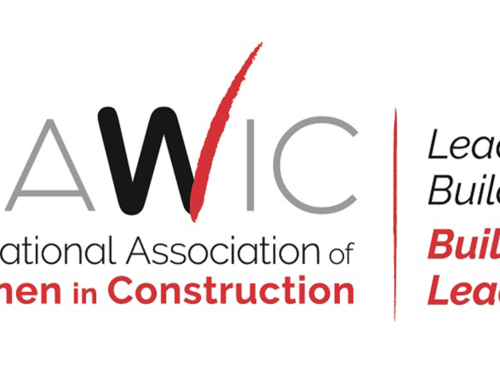This GBCA Safety Toolbox Talk discusses OSHA’s fall protection requirements for workers on two-point (swing stage) scaffolds. Click below to download the Toolbox Talk as a handout (includes Sign-In Sheet).
Suspended Scaffolds – Fall Protection
The number one scaffold hazard is worker falls. Fall protection consists of either personal fall arrest systems or guardrail systems, and must be provided on any scaffold 10 feet or more above a lower level (two-point scaffolds require both PFAS and guardrail systems). This is especially critical with suspended scaffolds, because they often are operated at extreme elevations.
- Each employee on a scaffold more than 10 feet above a lower level must be protected from falling to that lower level. [29 CFR 1926.451(g)(1)]
- Each employee on a two-point adjustable suspension scaffold must be protected by both a guardrail system and a personal fall arrest system. [29 CFR 1926.451(g)(1)(ii)]
- In addition to meeting the requirements of [29 CFR 1926.502(d)], personal fall-arrest systems used on scaffolds are to be attached by lanyard to a vertical lifeline, horizontal
lifeline, or scaffold structural member.

Workers on suspension scaffold with both a guardrail system (all 4 sides) and a personal fall arrest system (vertical lifeline with harness, lanyard and rope grab).
- On suspended scaffolds with horizontal lifelines that may become vertical lifelines, the devices used to connect to the horizontal lifeline must be capable of locking in both directions. [29 CFR 1926.502(d)(7)]
NOTE: Vertical lifelines may not be used on two-point adjustable suspension scaffolds that have overhead components such as overhead protection or additional platform levels. [29 CFR 1926.451(g)(3)]
- When vertical lifelines are used, they must be fastened to a fixed safe point of anchorage, independent of the scaffold, and be protected from sharp edges and abrasion. Safe points of anchorage include structural members of buildings, but not standpipes, vents, electrical conduit, etc., which may give way under the force of a fall. [29 CFR 1926.451(g)(3)(i)]
- It is dangerous and therefore impermissible for two or more vertical lifelines to be attached to each other, or to the same point of anchorage. [29 CFR 1926.451(g)(3)(iv)]
- When horizontal lifelines are used, they must be secured to two or more structural members of the scaffold. [29 CFR 1926.451(g)(3)(ii)]
- When lanyards are connected to horizontal lifelines or structural members, the scaffold must have additional independent support lines and automatic locking devices capable of stopping the fall of the scaffold in case one or both of the suspension ropes fail. These independent support lines must be equal in number and strength to the suspension ropes. [29 CFR 1926.451(g)(3)(iii)]
Remember to record the attendees of your toolbox talk!
Access GBCA’s full library of toolbox talks:





